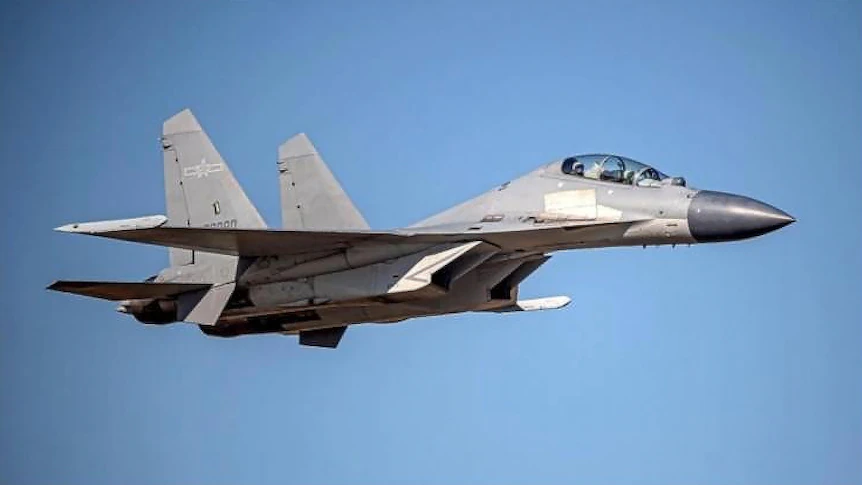A Chinese military plane flew within 3 meters of a US Air Force aircraft during exercises in the South China Sea last week, Washington said on Thursday. The episode forced the American military to perform evasive maneuvers to avoid a collision between the two planes.
According to the United States, the incident took place on the 21st and involved a Chinese Navy J-11 jet fighter and a US Air Force RC-135 aircraft. A US military spokesman said the Chinese jet came within 3 meters of the wing and 6 meters of the plane’s nose.
The circumstances of the incident are uncertain, but an eventual collision would increase, once and for all, tensions between Washington and Beijing, deepened by the frequent nods from the White House to Taiwan, a province considered rebellious by the Chinese.
US House Speaker Nancy Pelosi’s trip to Taiwan in August added fuel to the fire and kicked off a series of Chinese military exercises in the vicinity of the island. In the second, incidentally, Beijing carried out the largest air raid in history in 24 hours against Taipei’s defenses.
Commenting on last week’s episode, the United States accused China of stepping up increasingly dangerous behavior with its aircraft. “We expect all countries in the Indo-Pacific region to use international airspace safely and in accordance with international law,” the US Air Force wrote.
The United States has contacted the Chinese government about the situation, a US official told Reuters news agency – the content of the conversation, however, was not revealed. The Chinese embassy in Washington had not commented until the last update of this text.
US military planes and ships routinely conduct surveillance operations and travel through the region, considered a priority by the White House. In recent months, China has already been warning that the sending of such transports by the Americans would harm the peace in the region. In June, for example, Beijing accused Washington and other Western powers of turning the disputed South China Sea into a “fighting arena” and “hunting ground” and urged nations in the region to help repel foreign interference.
Beijing claims vast areas of the South China Sea that overlap with the exclusive economic zones of Vietnam, Malaysia, Brunei, Indonesia and the Philippines. Trillions of dollars in trade flow each year through the waterway, which also contains rich fishing grounds and gas fields.
In a meeting with his Chinese counterpart in November, US Secretary of Defense Lloyd Austin raised the need to improve crisis communications and also noted what he called dangerous behavior by Chinese military planes.
Despite tensions between the United States and China, the US military has long sought to keep lines of communication open with its Chinese counterparts to mitigate the risk of potential outbreaks or deal with any casualties.
Australia’s Department of Defense said in June that a Chinese fighter jet dangerously intercepted an Australian military surveillance plane in the region the month before. At the time, Canberra said the Chinese jet flew close to its air force aircraft and released a “straw packet” containing small pieces of aluminum that were ingested into the engine of the Australian aircraft.
In the same vein, the Canadian military accused, in June, Chinese warplanes of flying over its aircraft that monitor evasion of sanctions against North Korea.




